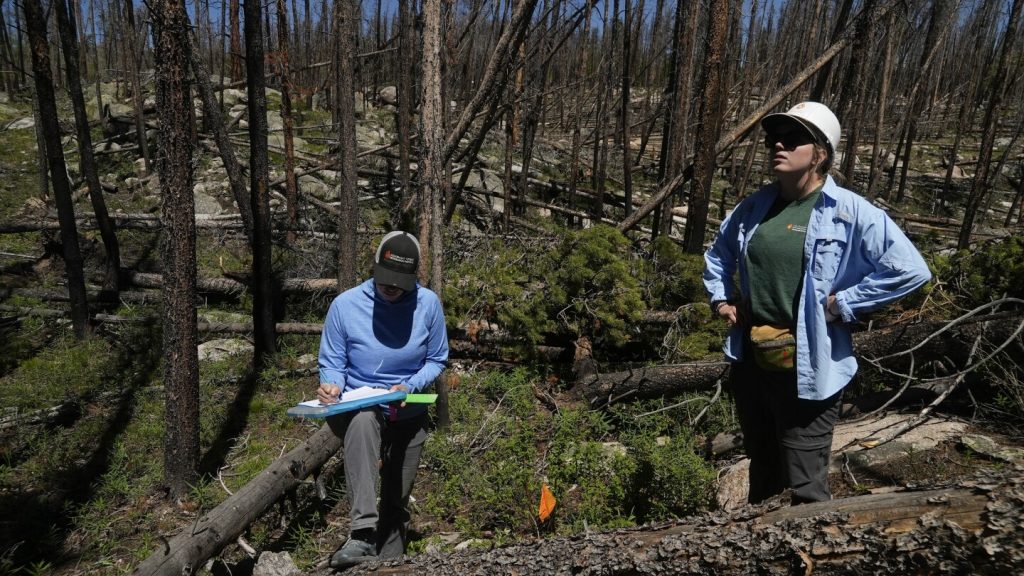Researchers in Colorado are facing challenges in reforesting areas devastated by wildfires, particularly the 2020 Cameron Peak fire. With the effects of climate change making it difficult for forests to naturally regrow, efforts to replant trees are falling short due to a lack of seed collection, nursery capacity, and trained workers. The gap between burned areas and replanting is widening each year, posing big challenges for scientists. The U.S. Forest Service is struggling to overcome environmental and cultural assessments, prolonging the time it takes to prepare burned areas for planting.
The increasing frequency and intensity of wildfires in the Western United States have led to larger burn scars that are unable to regenerate on their own. Forests are struggling to survive due to the destruction of seeds by fire, hardening of the ground, and susceptibility to new fires and drought. The ongoing megadrought in the region has further exacerbated the challenges of reforestation. Researchers are experimenting with new techniques, such as targeted planting at different elevations and with different species, to increase the survival rate of seedlings. They are also exploring the possibility of planting trees that are not native to the area to improve the chances of successful reforestation.
In New Mexico, where a significant amount of forest has been destroyed by wildfires, the lack of seedlings and nursery capacity has hindered reforestation efforts. The New Mexico Reforestation Center was established in collaboration with several universities and the state’s forestry division to address the issue. The center aims to produce 5 million seedlings annually for government, tribal, and private lands. However, experts emphasize the need for more nursery capacity, seed collection, and trained workers to make progress in closing the reforestation gap. Public and private sector cooperation is essential to overcoming the challenges associated with reforestation.
The Biden administration’s goal of planting a billion trees in national forests over the next 10 years faces challenges due to the lack of resources and infrastructure. While funding from the 2021 infrastructure bill has helped clear a portion of the backlog, more work is needed to prepare sites for replanting. Experts acknowledge that there will be areas where trees may never return, but it is crucial to make thoughtful and strategic decisions in reforestation efforts. The long-term sustainability of forests depends on planting the right species and densities to withstand future climate challenges. The U.S. must continue exploring innovative approaches to ensure the health and resilience of its forests in the face of ongoing climate change threats.


